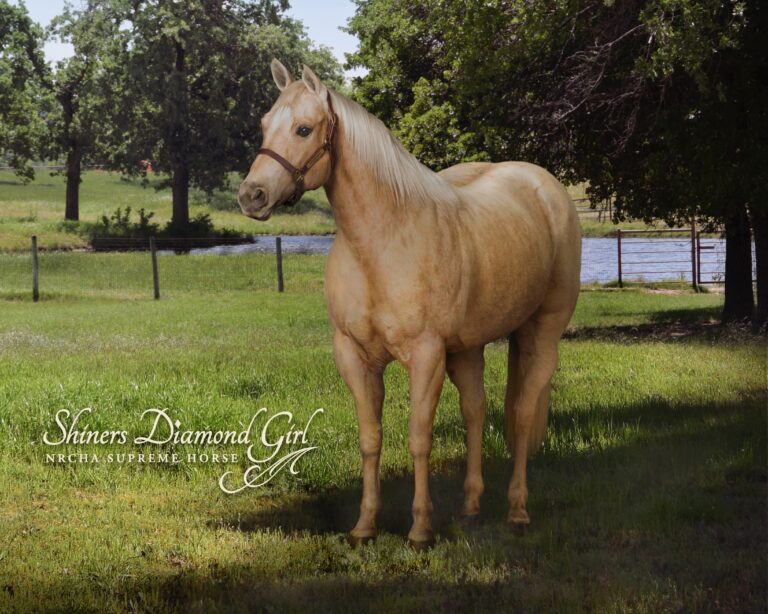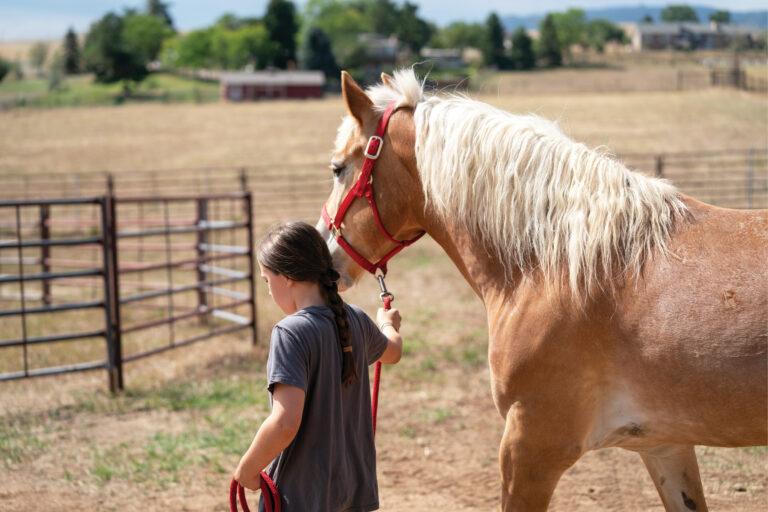Patience in the horse industry isn’t just a virtue. It’s the guiding principle that creates deep bonds and sets your horse up for long-term success.
Hold your horses! It’s interesting how that idiom that originated in a time where horses were the sole form of travel, and therefore posed a hazard in busy streets, can be applied to so much of modern life. In a world where faster is better, deadlines are looming, and the race is never finished, holding our horses becomes a more difficult task every day.
Amidst the beckoning of instant gratification, we must understand that true mastery comes in its own time. And find peace in embracing the rhythm of growth like so many pounding hoofbeats, as we learn the art of patience. There is a case to be made for mastering patience in the horse industry. In our training, our growth, and even our dreams. A case to be made for teaching our horses the same valuable trait. Allow me to make this case in multiple areas of horse ownership, training, and being a better horseman.

Strong Bonds Take Time
You have found the horse of your dreams. He’s exactly what you’ve been looking for, and you know that you will be an unstoppable team. After bringing him to his new home, and riding him a few times, you both embark on your first outing to a local show. And you don’t do well. How can this be? You
did your due diligence, you rode him before purchasing, you meshed so well together.
Hold your horses. Although we might be tempted to rush through the introductory stage of purchasing a new horse—especially if it’s a finished horse—strong bonds don’t happen overnight. You’re new to each other, both individuals with characteristics, quirks, and needs. Being patient when you purchase a new horse, and putting in the time with him is imperative to building a lasting bond. Even purchasing a horse that’s seasoned in the show pen doesn’t guarantee immediate results if you don’t understand each other. Of course, there are horses that can win with a new rider. There are a multitude of competitors who can successfully jump ride anything with hair. However, being patient when you bring home a new horse, allowing him to settle into his new surroundings, and taking the time to learn his unique needs will help build a lasting bond that transfers into the show pen.
Progress Isn’t Linear
Understanding that progress might resemble more of a labyrinth than a straight path is a cornerstone of effective horsemanship. A keen eye can detect small improvements, an unwavering commitment to the horse can weather setbacks, and patience can allow your horse to develop at his own pace. This rings true for training a green horse, developing your own riding skills, or again, bonding with a new horse.
Regardless of the goal you have set for yourself or your horse, patience isn’t just important to your success. It’s a sign of respect. Respecting your horse’s needs and individuality means understanding he will progress at his own pace. This can be a challenging task as we all fall prey to comparing our progress and accomplishments with others. Pushing for results can lead to burnout and souring a horse. It can also lead to potential injury or other setbacks. Overtraining to get results without adequate time to rest and recover isn’t ideal for horses or humans, and can leave lasting repercussions.
Commit to being patient with your horse’s progress by setting realistic goals and celebrating incremental victories. Understand his limits, and challenge him when appropriate. Have grace with yourself and your own riding. You can strive to improve your horsemanship and skills while also accepting that you, too, will progress at your own pace. When we rush to reach our destination, we don’t take time to appreciate or value the journey.

Instilling Patience in Your Horse
Allowing your horse to progress at his own pace, and not pushing for unrealistic results is a sign of respect for his individuality. Your horse demonstrating patience in certain tasks is also a marker of respect. A well-mannered horse is the goal. A pushy, impatient, and disrespectful horse can be at best difficult to work with, and at worst, downright dangerous. It’s on us as horse owners to teach our horses the trait of patience, that can benefit them in various aspects of their lives—and ours.
From behaving for the farrier, to standing quietly for a health check, the value of teaching your horse patience can’t be overstated. Your horse’s health experts are there for his benefit, and working with him on being an amicable patient allows his health team to effectively do their jobs. Standing still for a trim might not be his idea of fun, but just like in our lives, some things are necessary for the health and well-being of our horse.
Your farrier will be appreciative if you work with your horse on picking up his feet and practicing patience while having it in the air. This can be accomplished by dedicating a small amount of time every day to handling his feet and allowing him to see that he’s capable of accomplishing this. Working on the foundation of pressure and release can set him up for success in several areas. Not only will you keep your cherished farrier happy, but a horse used to having his feet handled can respond better in an emergency, should his feet ever become entangled.
Benefits
There are many benefits with a horse that stands tied patiently. Trying to mount a horse that’s already walking away poses a safety risk and can be frustrating. Swinging a saddle over a prancing and dancing horse is never fun, and trying to lead a horse that’s attempting to rush past you can be downright dangerous. It’s on us to teach our equine counterpart patience in these tasks, to set him up for success, and make the process more enjoyable for everyone involved.

The Importance of Tying
Standing tied patiently is another necessity for a show horse, working horse, or trail horse. Whether you’re tying him up to step off and fix a fence, or he’s waiting at the trailer for your class to begin, a patient horse is a calm horse. He is exposed to new sights and sounds when learning to stand tied. If you (safely) tie him in a well-trafficked area around your barn, he can learn to be comfortable in a busy area and will be more prepared for the hustle and bustle of show life.
Horses that can stand still without undue stress are more likely to approach new situations with curiosity rather than fear. This means he can respond better to changes in his environment. Whether that is a sudden movement during a trail ride or encountering an unfamiliar object during a clinic.
Ultimately, teaching your horse to stand tied patiently is an investment in his emotional intelligence and preparedness. It lays the groundwork for a calm and collected response in the face of the unpredictable. In this way, the simple act of patiently standing tied goes beyond its immediate purpose. It becomes a foundation for your horse’s confidence, adaptability, and resilience in the face of the unexpected.
Hold Yourself to the Same Standard
The case for patience in the horse industry is made in multiple areas. It extends beyond teaching our horse to stand tied quietly and being patient in our training progress. Patience can be synonymous with empathy. Wouldn’t a little bit of patience even improve our interactions with each other as competitors or horse lovers? In our instant gratification society, there are still many things that just take time. Patience is also a linchpin to creating a safe environment for human and horse. Rushing through training, interactions, or experiences can lead to injury or accidents. Quick fixes might yield temporary results. But being patient enough to take the time to do something with fidelity can set our horse—and ourselves—up for long-term success.
In the horse industry, patience isn’t just a virtue. It’s a guiding principle that can shape the interactions between horse and rider. By embracing patience, we lay the groundwork for a relationship defined by understanding, communication, trust, and mutual growth. At the end of the day, we’re all in this for the love of the horse. Have patience in the journey. It is the homage we pay to the incredible bond we get to build with these animals.






